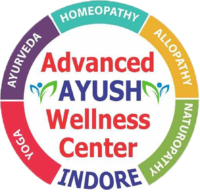If you have ever experienced discomfort in your lower rectum or noticed some blood in your stool, you might be dealing with piles, commonly known as hemorrhoids. Piles are a prevalent medical condition that affects millions of people worldwide. In this comprehensive article, we will delve into the causes, symptoms, and various treatment options for this often bothersome ailment.
1. What are Piles (Hemorrhoids)?
Piles, or hemorrhoids, refer to the swollen and inflamed blood vessels in the anal and rectal area. These blood vessels, when subjected to increased pressure, can become irritated and cause discomfort. There are two main types of hemorrhoids: internal and external.
Internal Hemorrhoids:
Internal hemorrhoids are located inside the rectum and are generally painless. They might cause bleeding during bowel movements, leading to the appearance of bright red blood in the stool.
External Hemorrhoids:
External hemorrhoids, on the other hand, develop under the skin around the anus and can be painful. They may cause itching, irritation, and swelling in the anal area.
2. What Causes Piles?
Several factors can contribute to the development of piles:
a) Straining During Bowel Movements:
One of the primary causes of piles is excessive straining during bowel movements, often due to constipation. Straining puts pressure on the blood vessels in the rectal area, leading to their swelling.
b) Chronic Diarrhea:
Chronic diarrhea can also lead to the development of piles. Frequent and watery stools can irritate the rectal area and cause inflammation.
c) Sedentary Lifestyle:
People who lead a sedentary lifestyle or sit for extended periods are more susceptible to piles. Prolonged sitting can increase pressure on the rectal veins.
d) Pregnancy:
Pregnant women are at a higher risk of developing piles due to the increased pressure on the pelvic region and hormonal changes.
e) Obesity:
Obesity is another contributing factor to piles. Excess weight puts additional pressure on the rectal veins.
f) Age:
As individuals age, the risk of developing piles increases. The tissues supporting the veins in the rectal area may weaken over time.
3. Recognizing Piles: Common Symptoms
Identifying the symptoms of piles is crucial for timely treatment. Some common signs of piles include:
a) Pain or Discomfort:
External hemorrhoids can be painful and may cause discomfort while sitting or during bowel movements.
b) Itching and Irritation:
Itching around the anus is a typical symptom of piles. The area may also feel sore and sensitive.
c) Bleeding:
Bleeding during bowel movements is a hallmark symptom of internal hemorrhoids. While the blood is usually bright red, it is essential to consult a healthcare professional to rule out other potential causes.
d) Lump or Swelling:
A lump or swelling around the anus can indicate the presence of external hemorrhoids.
e) Mucus Discharge:
Piles may lead to the secretion of mucus from the anus.
4. When to Seek Medical Attention
While piles can often be managed with home remedies and lifestyle changes, some situations require medical attention:
a) Excessive Bleeding:
If you experience persistent and heavy bleeding, it is essential to consult a doctor immediately.
b) Severe Pain:
Intense and unrelenting pain might be a sign of a more severe condition and warrants medical evaluation.
c) Prolapsed Hemorrhoids:
If the hemorrhoids protrude from the anus and cannot be pushed back inside, medical attention is necessary.
5. Treatment Options for Piles
a) Lifestyle Modifications:
Mild cases of piles can often be managed with simple lifestyle changes. Increasing dietary fiber intake, drinking plenty of water, and regular exercise can help prevent constipation and reduce the risk of developing piles.
b) Topical Treatments:
Over-the-counter creams, ointments, and suppositories can provide relief from itching and discomfort associated with piles.
c) Sitz Baths:
Sitz baths, where the affected area is soaked in warm water, can help soothe the symptoms of piles.
d) Hemorrhoid Banding:
In more severe cases, a medical procedure called hemorrhoid banding might be recommended. It involves tying a rubber band around the base of the hemorrhoid to cut off its blood supply, causing it to shrink and eventually fall off.
e) Infrared Coagulation (IRC):
IRC is a non-surgical procedure that uses infrared light to coagulate the blood vessels, leading to the shrinking of hemorrhoids.
f) Hemorrhoidectomy:
A hemorrhoidectomy is a surgical procedure used to remove large and painful hemorrhoids.
6. Preventive Measures for Piles
Taking preventive measures can help reduce the likelihood of developing piles:
a) Maintain a Healthy Diet:
Include high-fiber foods in your diet to prevent constipation, which can aggravate piles.
b) Stay Hydrated:
Drink an adequate amount of water throughout the day to maintain regular bowel movements.
c) Stay Active:
Engage in regular physical activity to promote healthy bowel function.
d) Avoid Straining:
Avoid straining during bowel movements, and do not delay using the bathroom when you feel the urge.
7. Conclusion
Piles (hemorrhoids) are a common condition that can cause discomfort and inconvenience. Understanding the causes, symptoms, and treatment options is essential for effectively managing this ailment. By making lifestyle adjustments and seeking timely medical attention when necessary, individuals can find relief from piles and improve their overall quality of life.
Remember, if you are experiencing severe symptoms or are unsure about the diagnosis, consult a healthcare professional for proper evaluation and personalized treatment recommendations.
